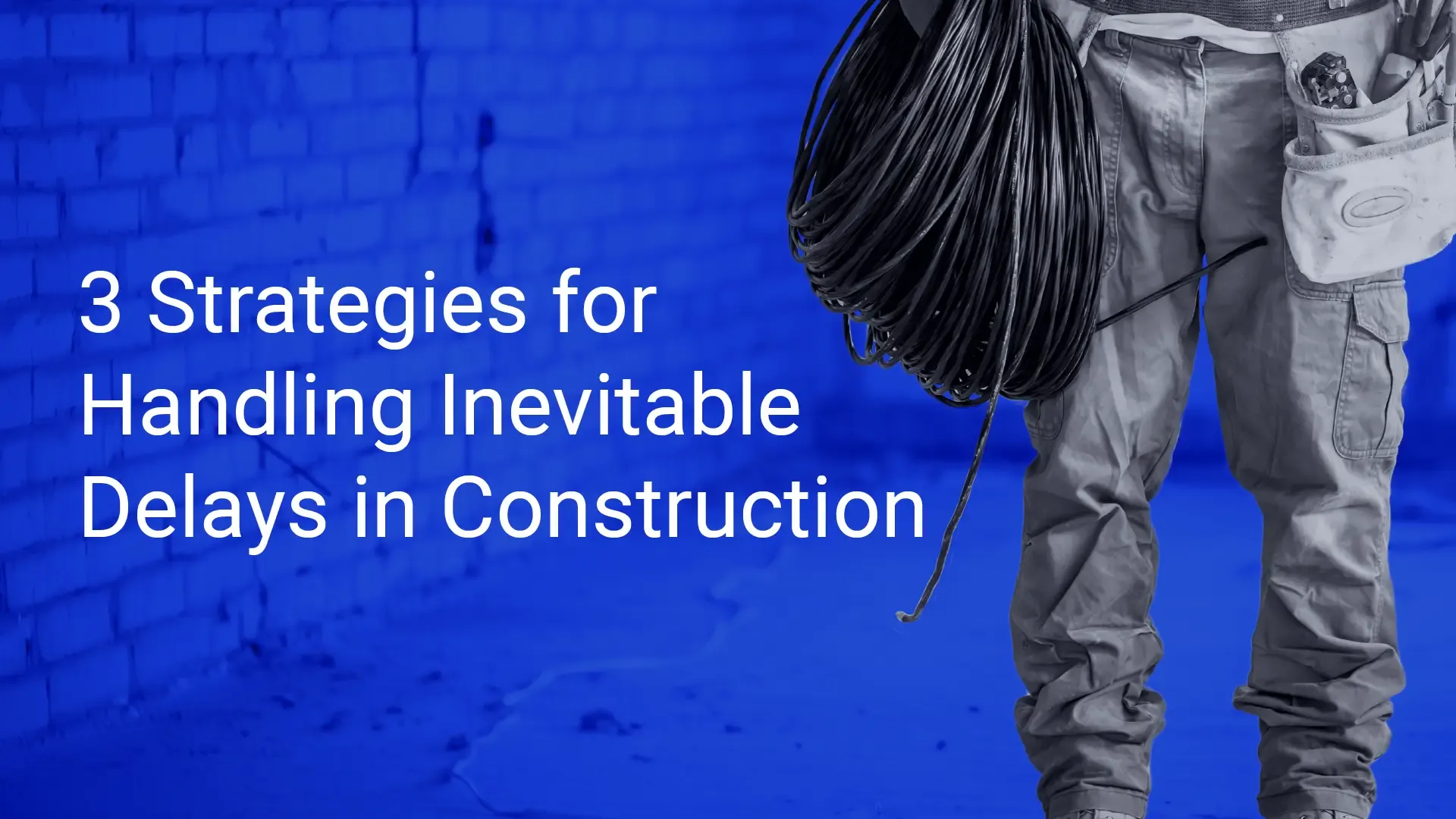3 Strategies for Handling Inevitable Delays in Construction

Delays in construction are as certain as nails and concrete, but what matters most is how you handle them. Even the most well-planned projects face unexpected challenges—be it bad weather, supply chain disruptions, or unforeseen site conditions. Managing delays effectively can be the difference between a setback that spirals out of control and one that’s swiftly brought back on track.
To handle delays well, focus on having solid contingency plans, proactive communication, and a flexible schedule. Let’s explore these strategies in detail.
Are you ready to take control of your construction project's schedule?
Watch NowPlan for the Unexpected with Contingency Plans
A key to managing construction delays is to expect that they’ll happen and prepare for them.
- Build Buffers into Your Timeline
Adding buffer days to critical phases of your project helps you absorb unexpected slowdowns without missing your final deadline. This doesn’t mean making the project longer than necessary; it means creating a timeline that realistically accounts for potential risks and provides some built-in flexibility. - Identify Risk Factors Early
During the planning stage, outline potential issues that might cause delays. For example, weather-dependent tasks like exterior painting might need more cushion, while equipment deliveries should have backup suppliers in place. Document these risks so you can react quickly if they occur. - Create Action Plans for Common Delays
Prepare detailed, written action plans for frequent delay causes, such as supplier shortages or staffing gaps. These plans should be reviewed with the team ahead of time so that when delays happen, your crew knows exactly how to proceed, minimizing downtime. This proactive approach will reduce disruptions to your workflow and keep the project on track.
Communicate Promptly with Stakeholders
Transparent, prompt communication is vital when dealing with delays. The sooner your stakeholders know about an issue, the better they can adjust their expectations and plans.
- Notify Stakeholders as Soon as a Delay is Identified
Whether it's a client, a subcontractor, or a supplier, each stakeholder deserves to know what's happening. When delays occur, ensure you notify everyone affected with a clear explanation of the problem and your proposed solution. - Use Construction Scheduling Software for Real-Time Updates
Project management tools like construction scheduling software allow you to update timelines in real time, instantly sharing changes with everyone involved. This keeps everyone on the same page, eliminating confusion. - Set Up Regular Progress Meetings
Schedule periodic meetings with key stakeholders to discuss project progress and potential risks. This proactive communication builds trust and prevents surprises when delays happen.
Adjust the Schedule with Flexible Tools
Construction schedules are dynamic, and managing delays means having the ability to adjust plans smoothly. Tools that allow flexible scheduling are essential.
- Use Gantt Charts with Task Dependencies
Gantt charts are a great way to visualize your project timeline and adjust schedules as needed. With task dependencies clearly defined, you can see how changing one task’s deadline affects others. When delays occur, adjusting the start or finish dates of a task will automatically update dependent tasks, allowing you to create a realistic revised timeline. - Leverage Technology for Rescheduling
Scheduling software that allows "drag and drop" adjustments makes it easier to manage timelines when delays happen. The flexibility offered by construction scheduling software ensures that all updates are reflected immediately, so there's no room for miscommunication. JobTread, for instance, allows contractors to use mass actions to shift dates efficiently, saving hours of manual adjustments. - Reassign Resources as Needed
When a delay impacts one area, look for opportunities to shift resources to another. For instance, if an exterior task is delayed due to bad weather, moving workers to indoor tasks can keep the project progressing. Construction scheduling tools can help reassign resources effectively, maintaining productivity even in the face of unexpected setbacks.
Learn How JobTread's Scheduling Helped Iconic Custom Home Builders Win a $300,000 Job
Read MoreConclusion: Make Project Delays Manageable with Scheduling Software for Construction
Delays in construction are inevitable, but with proactive planning, clear communication, and flexible scheduling, their impact can be minimized. Construction scheduling software like JobTread helps you stay on track with tools like Gantt charts, task dependencies, and real-time updates, allowing quick adjustments and efficient communication.
Book a free JobTread demo today to see how it can streamline your projects.
Elevate your company to new levels of success!
Let one of our experts show you how JobTread will get you organized, save your time, and increase your profits.
Book a Demo
